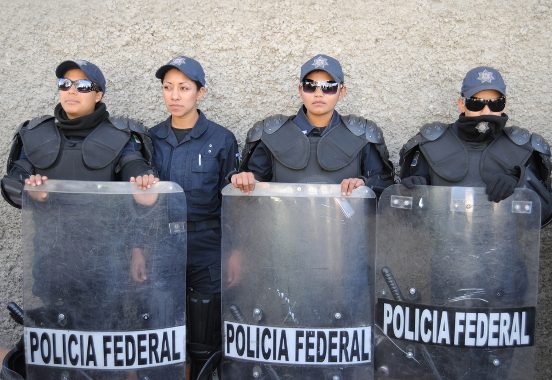To End the Child Migrant Crisis, End the Drug War

As children from Central America continue to pour across the U.S. border, pundits and politicians are still searching for a scapegoat. 70,000 unaccompanied minors are expected to cross the border this year, highlighting an urgent need to fix whatever precipitated the problem. Unfortunately, the real culprit that both sides of the aisle continue to ignore is one of the federal government’s own making—the War on Drugs that has incited violence south of America’s border for decades.
Americans shouldn’t expect their elected officials to comprehend the current crisis’ root cause anytime soon. Earlier this month, 33 House Republicans pointed the finger at President Obama in a recent letter, pointing to his 2012 executive order deferring court action for child migrants. However, this explanation is unlikely since the program only applies to children that arrived prior to 2007.
Meanwhile, many Democrats are eager to point out that most of the current immigration policies were implemented under the Bush Administration, including a 2008 law giving children from non-contiguous countries the right to a court hearing. Yet, even this does not address the motivation behind why thousands of Central American children are willing to risk their lives to cross a vast desert for the mere chance of a sympathetic court ruling.
Fortunately, there is one true impartial expert who is not afraid to speak truth above this bipartisan hullabaloo. Marine Corps Gen. John F. Kelly, head of the United States Southern Command, penned an essay for Military Times earlier this month pointing to the direct cause of the problem: “Drug cartels and associated street gang activity in Honduras, El Salvador and Guatemala, which respectively have the world’s number one, four and five highest homicide rates, have left near-broken societies in their wake.”
Conservatives may be skeptical that the drug violence is the immediate source of the problem, since Central American countries have been in a state of unrest of decades, but the most recent crime statistics are hard to ignore. “By U.N. statistics, Honduras is the most violent nation on the planet with a rate of 90 murders per 100,000 citizens,” Gen. Kelly points out. Bordering Central American countries are not too far off either, with Guatemala at 40 and El Salvador at 41. By comparison, the murder rate in current combat zones like Afghanistan and the Democratic Republic of the Congo are starkly lower at 28 per 100,000 as of 2012.
The dramatic surge in violence in recent years is indisputable. In 2000, the murder rate per 100,000 people was just short of half of what it currently is for Guatemala and Honduras at 26 and 51, respectively. Given these stark statistics, it’s no surprise that a recent UN survey found violence to be a top reason many migrant children cited their motivation to leave their homeland, such the 57 percent of those from Honduras whose reasons for leaving “raised potential international protection concerns.”
The United States is in large part responsible for precipitating the problem. It should come as no surprise that the production of narcotics, like any other black market good, was pushed into the hands of disreputable characters once the federal government started ramping up prohibition enforcement in the 1970s. In the decades since, thousands of Central American gangsters have been deported upon serving sentences in the United States, allowing violent criminals to dominate the drug trade south of the border.
In recent years, the U.S. has funneled hundreds of millions of dollars to Mexico and Colombia to help the countries fight their drug wars. Consequently, as the Cato Institute’s Ted Galen Carpenter explains, “leading Mexican cartels began to move operations into Guatemala, Honduras, and El Salvador in 2008 as the pressure in Mexico mounted.” Drug warriors can spend billions and arrest thousands, but their tactics simply can’t suppress human demand for narcotics. “It’s a game of ‘squeeze the balloon,’” Carpenter explains. “Put pressure on the drug cartels in one area, and the drug trade just pops up somewhere else.”
Sadly, this stark failure is all too common for the drug war. Despite over $1 trillion in prohibition enforcement expenditures, there have been no measurable decrease in abuse rates in the U.S. Furthermore, mandatory minimum sentencing have overcrowded America’s prisons to the point that states like California have received court orders to decrease their number of inmates.
Decriminalizing or even legalizing drugs, on the other hand, could decrease crime by shifting the sale of narcotics from the dangers of the informal economy to the legal market where it can be taxed and regulated by the government. Drug reform could help put Central American cartels out of business through good old-fashioned American capitalism.
In short, the War on Drugs has fomented violence in Central America that has in turn created the current migrant children crisis. Partisans can quibble about which side of the aisle is more responsible for the current crisis, but the fact remains that these children will continue fleeing their homeland—be it for the United States or another country—unless the federal government ends the drug war.
Casey Given is an editor at Young Voices, a project aiming to promote Millennials’ policy opinion in the media.